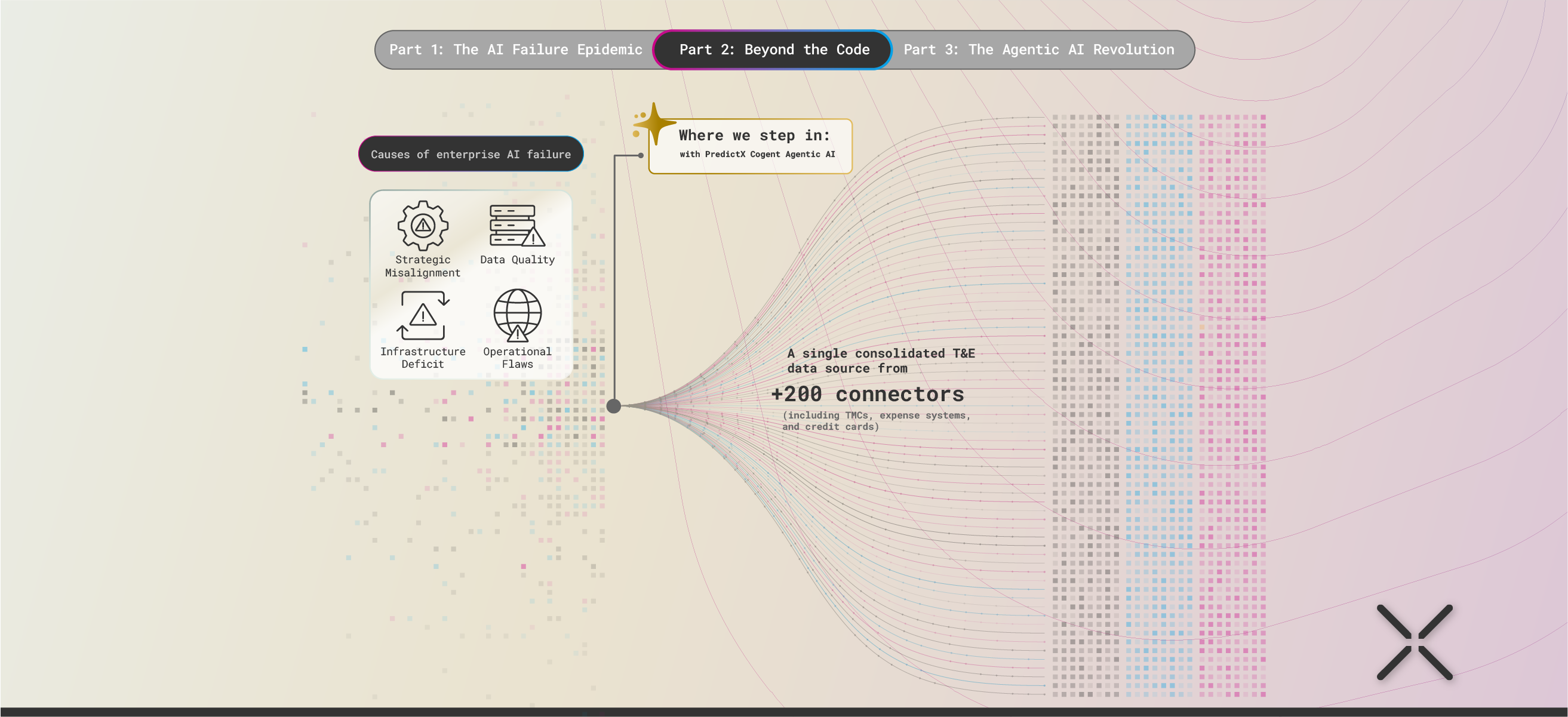This is Part 2 of a three-part series. Read Part 1 and Part 3 to get the full blueprint for T&E success.
The Real Reason Your AI Projects Fail: A Deep Dive into the AI Paradox
In the first part of this series, we introduced the Enterprise AI Paradox: a staggering 95% of enterprise AI pilots fail to deliver measurable ROI, a reality that sits in stark contrast to the billions being invested. The true financial peril lies in the quiet, widespread abandonment of initiatives before they ever see the light of day. So, what's truly behind this epidemic of failure? According to industry experts, the most frequent and impactful cause is not technology itself, but a profound lack of organizational readiness. The "canonical causes" of failure fall into four key domains: strategy, data, operations, and organization.
Strategic Misalignment: The Top-Down Failure
More than any other type of issue, failures driven by the decisions and expectations of leadership are the most common reason AI projects fail.
- Optimizing for the Wrong Problem: A fundamental disconnect from business value often dooms projects from inception. Leaders fail to communicate what problem the AI truly needs to solve, leading technical teams to optimize for faulty metrics. For example, a focus on maximizing units sold might overlook the more valuable goal of achieving the greatest profit margin.
- The Magic Wand Expectation: Hype and overconfidence lead many senior leaders to treat AI as a "magic wand" that can automate any process or solve any problem. This expectation often leads them to demand AI solutions for simple problems that could be solved by cheaper, established techniques, like basic "if-then rules". They also fail to grasp that AI algorithms are inherently probabilistic, which can lead to disappointment and a loss of faith when the model doesn't provide perfect certainty.
- Underestimating Commitment: Leaders frequently underestimate the time and cost required for a project. The time and expense of acquiring, cleaning, and exploring data, which constitutes an estimated 80% of all AI development, are often not fully accounted for. Rapidly shifting priorities can cause projects to be discarded before they ever demonstrate tangible results.
Data-Centric and Operational Flaws: The Hidden Roots
After leadership-driven failures, data-centric issues are the next most common reason AI projects fail.
- Data Quality is the Foundational Flaw: Research consistently shows that 70% or more of AI project failures are directly linked to data problems, not algorithmic shortcomings. Data collected for compliance or logging often lacks the context, granularity, and quality needed for effective AI model training. A related problem occurs when data is unbalanced, which forces algorithms to correlate rare events with random, unrelated characteristics.
- The Infrastructure Deficit: Underinvestment in foundational infrastructure makes projects protracted and difficult to maintain. Inadequate infrastructure can prevent teams from building pipelines for continuous data monitoring and rapid model deployment, making them "completely blind to failures" that arise after a model is put into production.
- Chasing the Latest Tech: A "bottom-up" failure often occurs when AI projects focus on utilizing the "latest and greatest technology" instead of achieving a laser-focused solution for the business problem at hand. Technical teams may prioritize experimenting with new models to advance their skills, even when older, more-established tools are a better fit.
The PredictX Difference: How Cogent Agentic AI Solves These Flaws
These failures point to a core organizational lack of readiness, especially when it comes to managing vast amounts of unstructured data like that found in Travel & Expense Reporting. The challenge is not the sophistication of the algorithms, but the ability of the workforce to integrate and use the tools effectively with high-quality data.
This is where PredictX’s platform and Cogent Agentic AI solution offer a clear advantage. Our platform addresses the foundational data flaws by creating a single consolidated T&E data source from over 200 connectors, ensuring your AI is trained on accurate and reliable information. Cogent, our award-winning workspace, is the powerful tool built specifically to use this clean data, providing intelligent, contextual answers to complex T&E challenges that generic chatbots or static dashboards could never deliver.
- Solving Strategic Misalignment: Cogent's Agentic AI acts as a "digital colleague," providing the intelligence of a data science team at your fingertips. It enables leaders to ask specific, natural language questions and receive dynamic, actionable insights, closing the communication gap between business goals and technical execution.
- Overcoming Data Quality Gaps: Our platform ensures data is not only collected but is meticulously cleansed, validated, and fused into a single source of truth with 99.9% accuracy. This allows Cogent to provide predictive analytics with a high degree of confidence, directly addressing the foundational flaw of poor data quality.
- Building the Right Infrastructure: Cogent is integrated within the PredictX Platform, which ingests data from more than 200 connectors, including TMCs, expense systems, and credit cards. This robust infrastructure makes it easy to implement and scale, providing a seamless experience for your corporate travel management system without requiring complex IT support.
In the next and final part of this series, we will move beyond the problem to a concrete solution: a detailed blueprint for how your organization can cultivate the AI fluency needed to join the 5% of companies who succeed.
Related Posts

Part 1: The AI Failure Epidemic: Why McDonald's & Air Canada's Failures Reveal a T&E Reporting Crisis

Part 3: The Agentic AI Revolution: How to Join the 5% Who Succeed by Investing in People

How Cogent’s Agentic AI Revolutionizes T&E Reporting with RAG
.webp)
Cogent Wins 2025 BTS Europe Innovation Faceoff: Setting a New Benchmark for AI-Driven Travel & Expense (T&E) Solutions
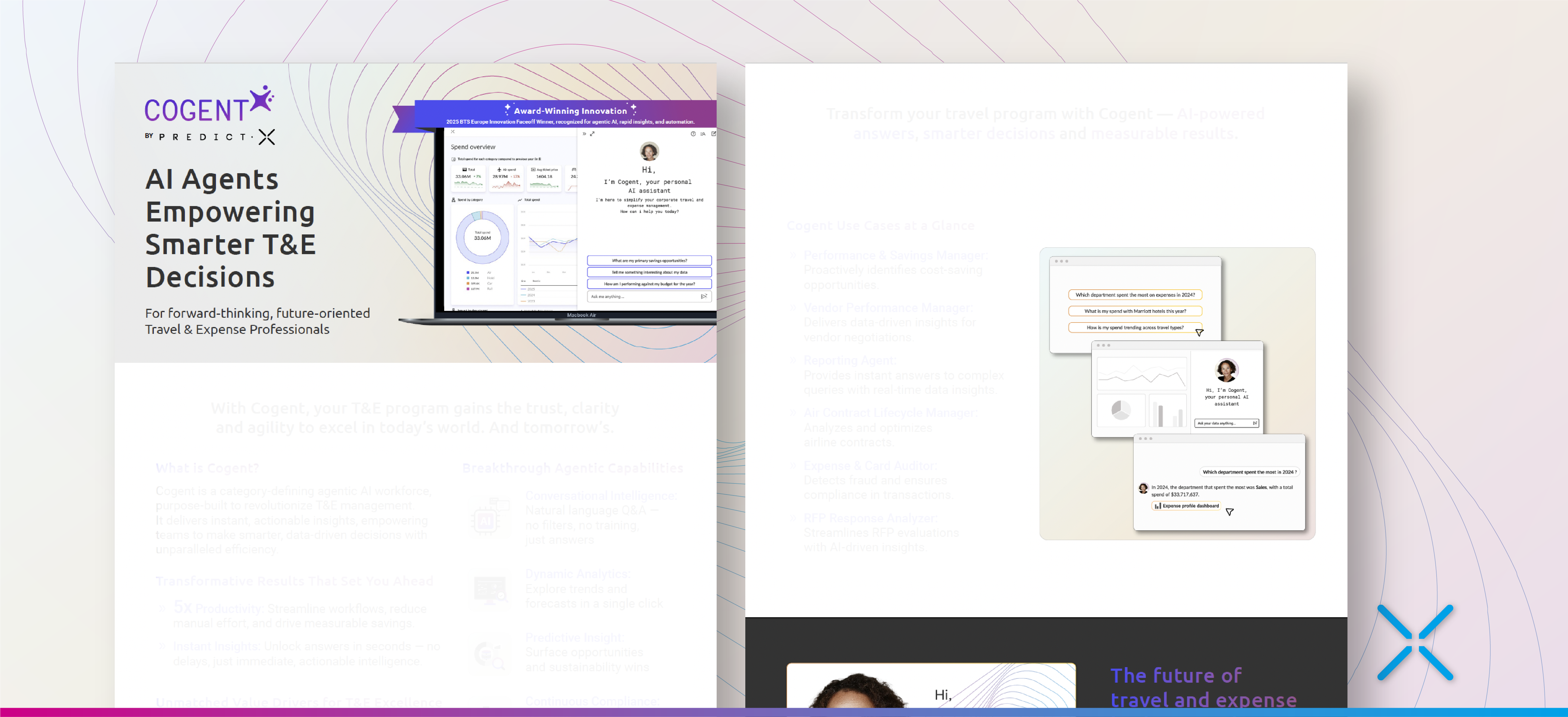
Product Sheet | Cogent - AI-Powered Travel and Expense (T&E) Reporting
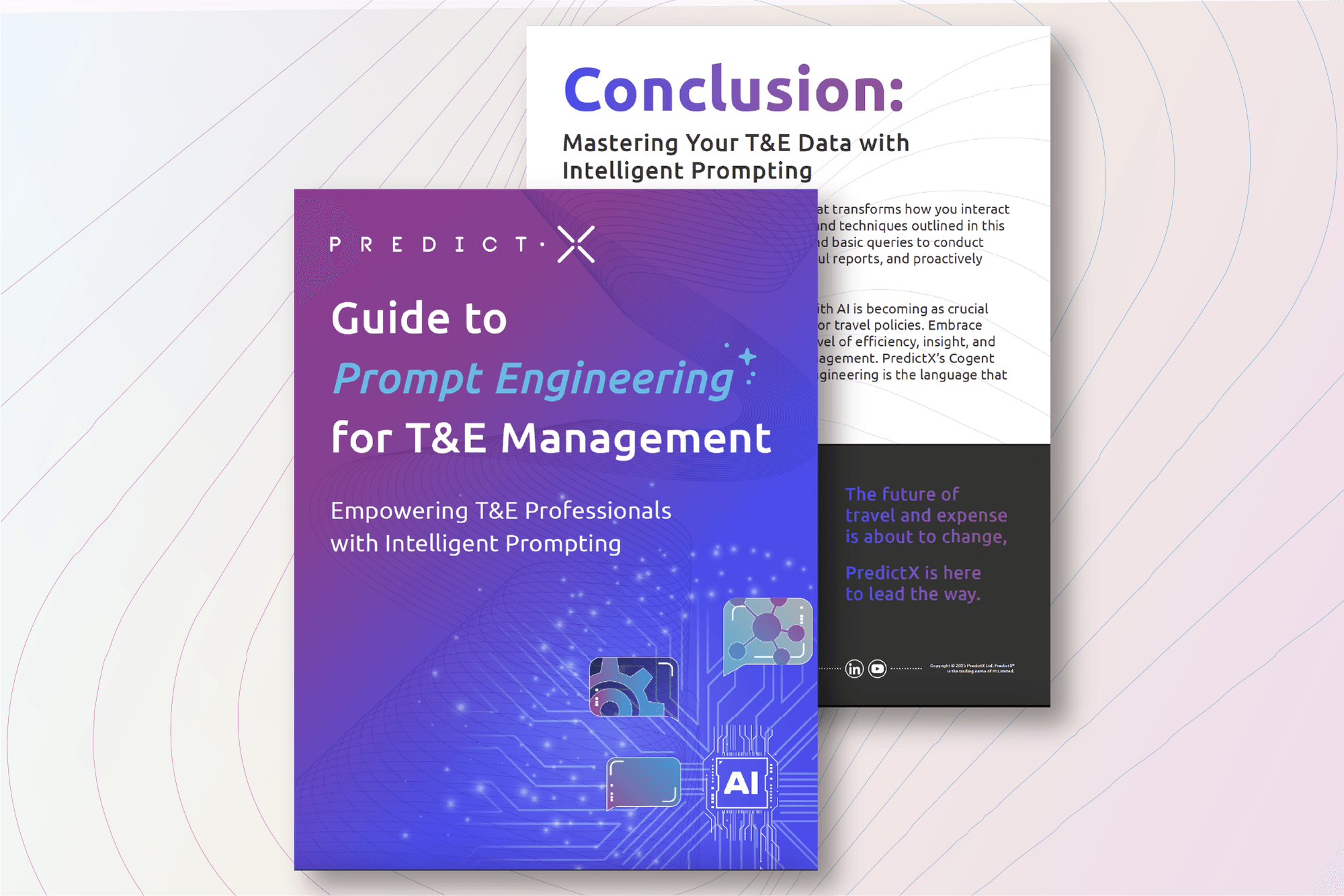
Prompt Engineering for T&E: Mastering Cogent Agentic AI to Drive Savings

Transform Travel & Expense (T&E) Management with Cogent’s Agentic AI Solutions
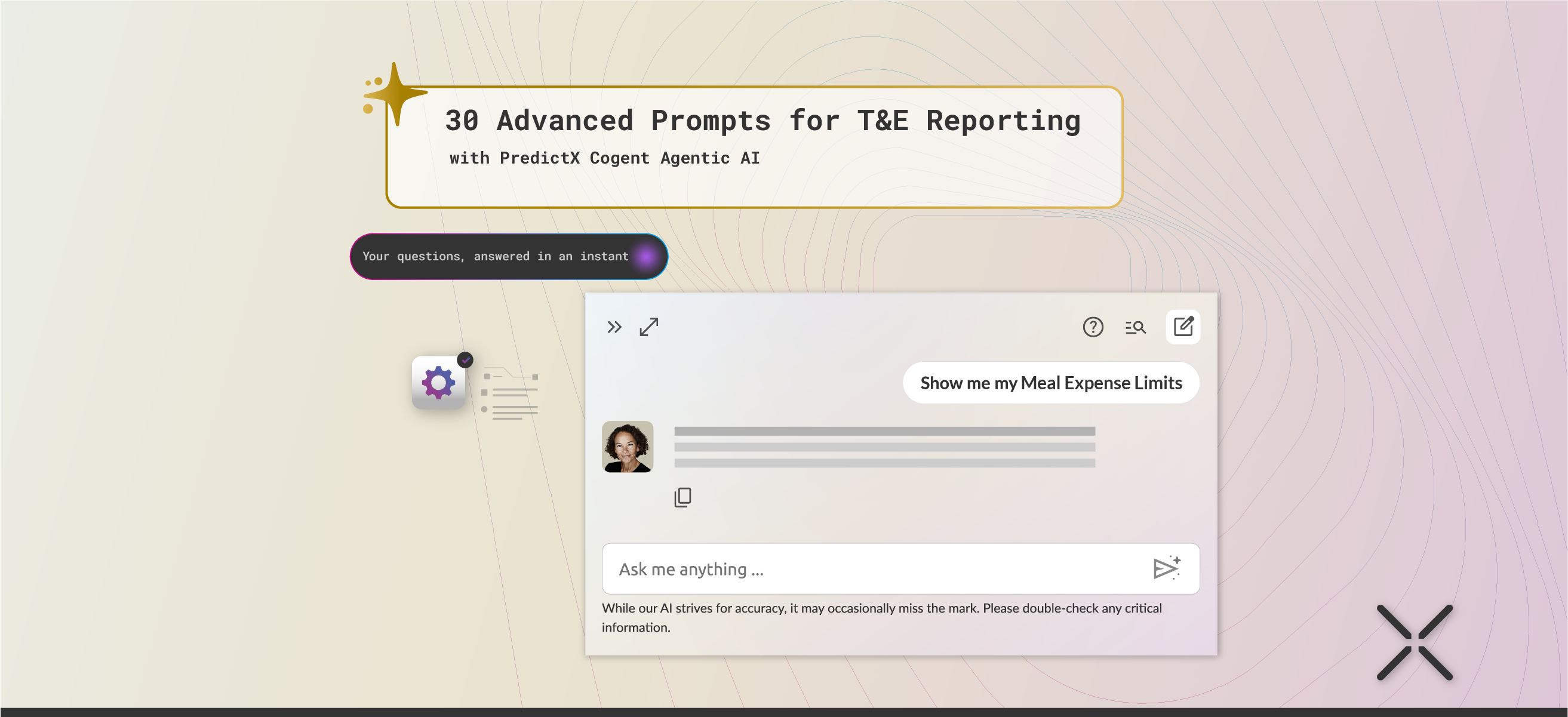
The Ultimate Guide: What to Ask Your AI for Smarter T&E Reporting | Cogent Agentic AI
.webp)
Beyond Dashboards: Cogent - The Agentic AI Revolution in T&E Reporting & Expense Audit
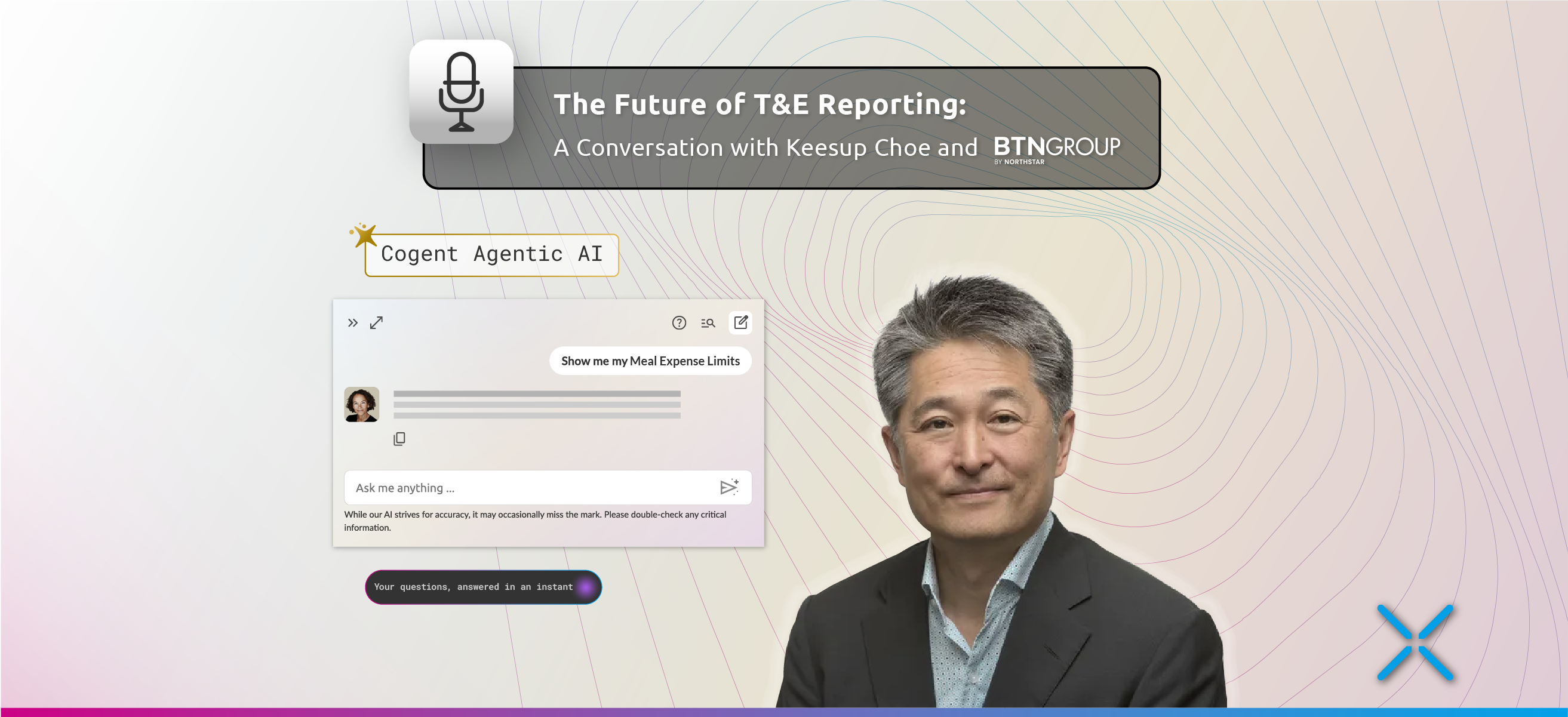
The Future of T&E Reporting: A Conversation with Our CEO and BTN Group | Cogent Agentic AI
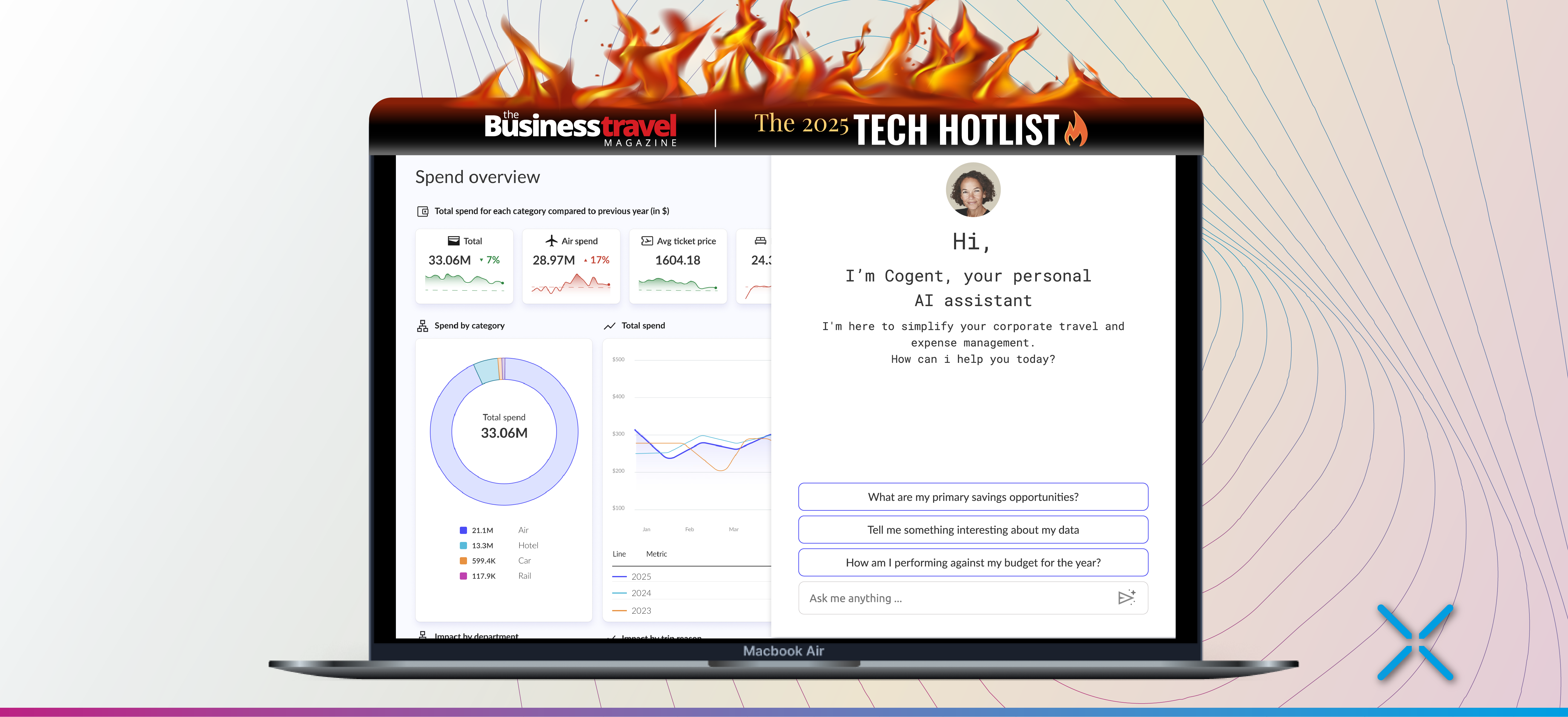
Hot List, Hot News: We've Been Named to the Tech Hotlist for Redefining Corporate Travel with Cogent Agentic AI
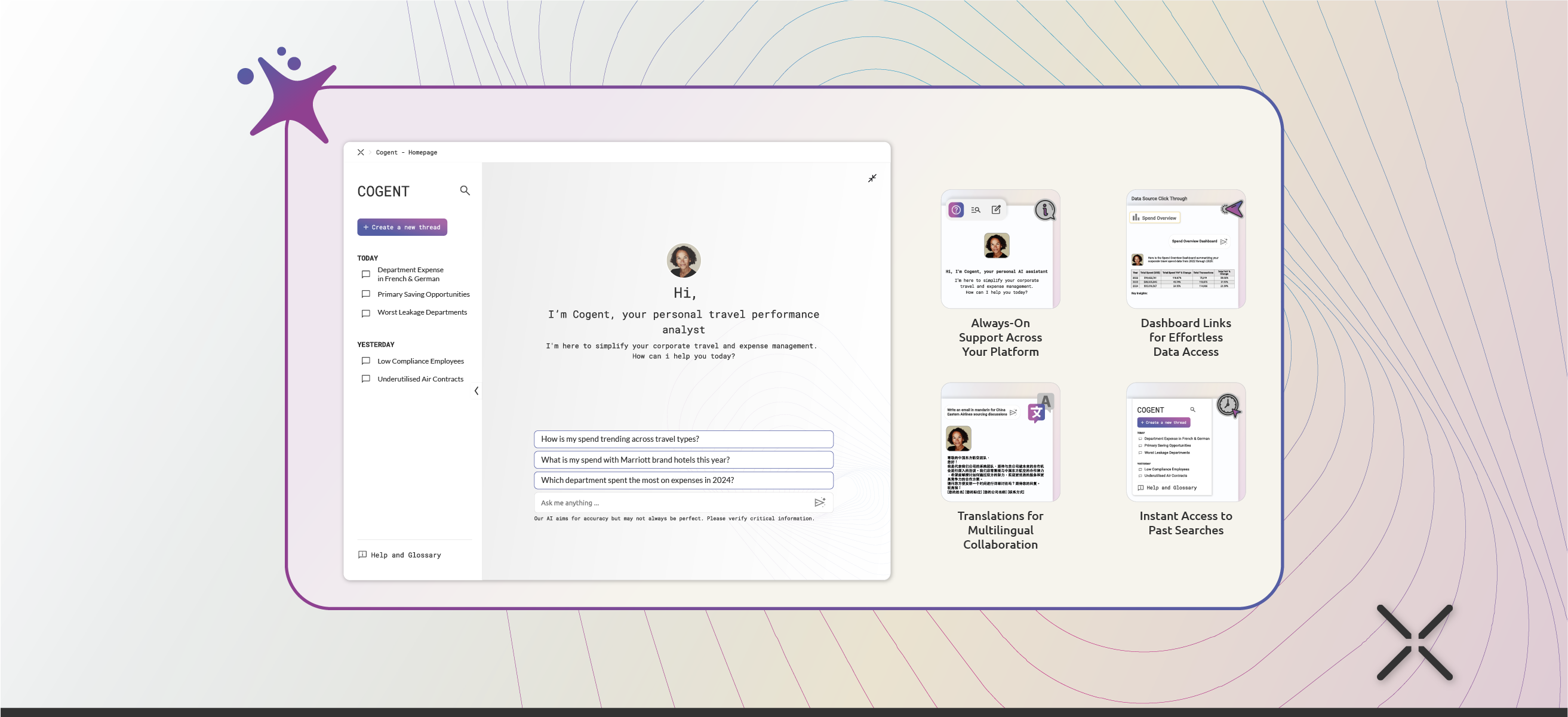
The T&E Manager of Tomorrow: How Cogent Agentic AI is Your Shortcut to Strategic Leadership in Corporate Travel
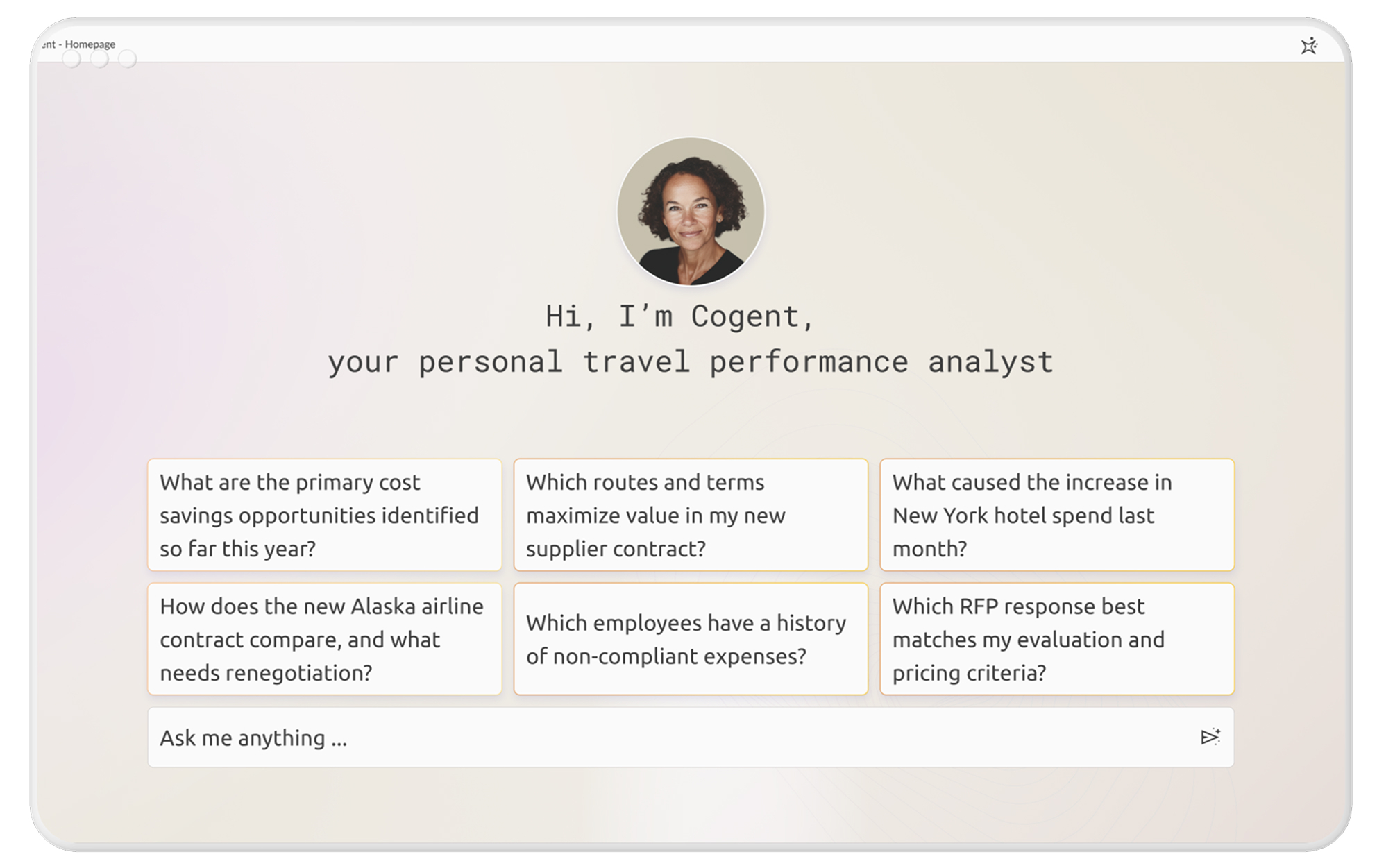
6 Powerful Cogent Use Cases for Travel & Expense (T&E) Reporting, Travel Data & Predictive Analytics with Agentic AI

Mastering the Future of Corporate Travel with Cogent Agentic AI: An Exclusive Interview with PredictX CEO Keesup Choe


